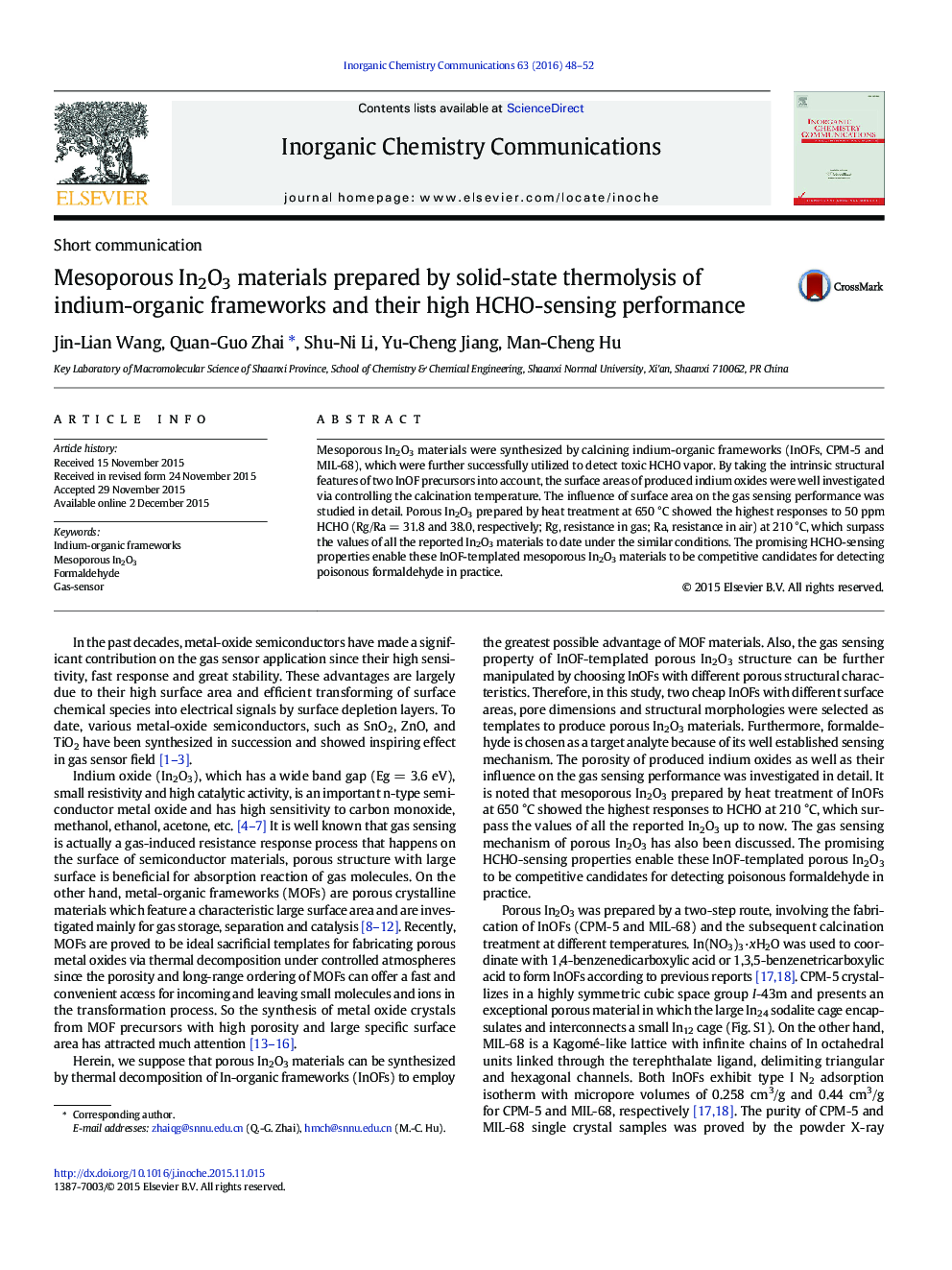| Article ID | Journal | Published Year | Pages | File Type |
|---|---|---|---|---|
| 1305311 | Inorganic Chemistry Communications | 2016 | 5 Pages |
•Mesoporous In2O3 materials prepared by thermal decomposition of InOFs;•Tunable surface areas of porous In2O3 controlled by the calcination temperature;•Mesoporous In2O3 materials showed the highest responses to HCHO.
Mesoporous In2O3 materials were synthesized by calcining indium-organic frameworks (InOFs, CPM-5 and MIL-68), which were further successfully utilized to detect toxic HCHO vapor. By taking the intrinsic structural features of two InOF precursors into account, the surface areas of produced indium oxides were well investigated via controlling the calcination temperature. The influence of surface area on the gas sensing performance was studied in detail. Porous In2O3 prepared by heat treatment at 650 °C showed the highest responses to 50 ppm HCHO (Rg/Ra = 31.8 and 38.0, respectively; Rg, resistance in gas; Ra, resistance in air) at 210 °C, which surpass the values of all the reported In2O3 materials to date under the similar conditions. The promising HCHO-sensing properties enable these InOF-templated mesoporous In2O3 materials to be competitive candidates for detecting poisonous formaldehyde in practice.
Graphical abstractMesoporous In2O3 materials successfully produced by calcining indium-organic frameworks showing tunable porosity and high responses to HCHO, which surpass the values of all the reported In2O3 materials under the similar conditions.Figure optionsDownload full-size imageDownload as PowerPoint slide
